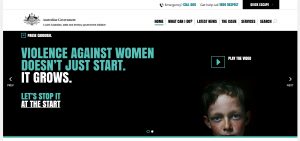Australia is globally leading in reports of sexual assault. With recent media attention on the attitude towards sexual violence and the Australian Government’s ‘Stop it where it Starts’ campaign, it’s a matter of breaking down a dangerous culture and attitude towards women, Emmanuel Arnold reports.
The rate of sexual assault in Australia is double the global average. With 92 people per 100 000 of the national population reporting experiences of sexual violence, the UN ranking places Australia as the third highest in reports of sexual assault.
To put this in perspective, New Zealand in 2015 reported a rate of 32 per 100 000, Sweden at 40 and Canada at 68. In 2015 there were 17 605 reports of sexual assault in Australia made by women.
[infogram id=”6310e3ea-c414-4872-8081-5f60ede39399″ prefix=”K37″ format=”interactive” title=”Untitled chart”]On average, only 25% of cases are reported. The number of reports in 2015 increased by 10% from statistics in 2010. Additionally, there has been a shift in the age group making the reports. In 2010, 25-34 year old women were the age bracket experiencing the highest rate of violence. In 2012, 18-24 year old women were the age group most targeted, according to the Australian Bureau of Statistics. Yet females aged between 15 and 19 years have been found seven times more likely to be victims of sexual assault when compared to the overall population of Australia.
[infogram id=”f07c8e60-54c0-4e63-924f-cea84d0c1c50″ prefix=”tuZ” format=”interactive” title=”Experience by age”]Here, it is clear that Australia’s rate of sexual assault is not only increasing, but the age of victims is increasingly younger. This data could indicate that more people are coming forward, however, the statistic that only one-quarter of incidents are reported has remained consistent in the past five years.
In the wake of the media circus that was Brock Turner’s trial in March, the 20-year-old has since been labelled by Washington Post at the ‘face of sexual assault’. The Standford swimmer and convicted rapist came to symbolise the shortcomings of the criminal justice system when it comes to the protection of women as following his trial and resulting 6-month sentence, he only spent 3 months incarcerated.
This case drew a great deal of media attention, specifically to the culture that surrounds sexual assault in American colleges and universities. In a study done by the American College Health association, one in 20 women reported being raped in college since the start of the year and eighteen percent experienced sexual assault. Yet the culture in Australia is one that equally needs addressing.
Director of the Queensland Centre for Domestic and Family Violence Research at Central Queensland University, Heather Nancarrow, attributes the rate of sexual assault to the general attitude towards violence in Australia.
“You need to look at cultural links, the very broad culture in Australia of continuing acceptance of male superiority and women being objectified, men feeling like they have an almost right to assert authority over women,” she said.
A recent campaign by the Australian Government against domestic violence carries the slogan “if you think violence against women is a big problem, tackle it when it’s a little one.” The campaign encourages a culture shift where “It’s important we understand the cycle of violence. Not all disrespect towards women results in violence. But all violence against women starts with disrespectful behaviour.”

The $30 million dollar project targets attitudes towards women that foster a violent culture. The ‘Stop it at the Start’ campaign demonstrates the need to prevent the development of abusive behaviour and attitudes in young children, directing the message to adults who are ‘influencers’. Here, the advert lists parents, children, teachers and coaches as possible facilitators of these violent behaviour patterns.
The increase of reported sexual assault in the past five years demonstrates an additional need in Australia to campaign against sexual violence specifically.


